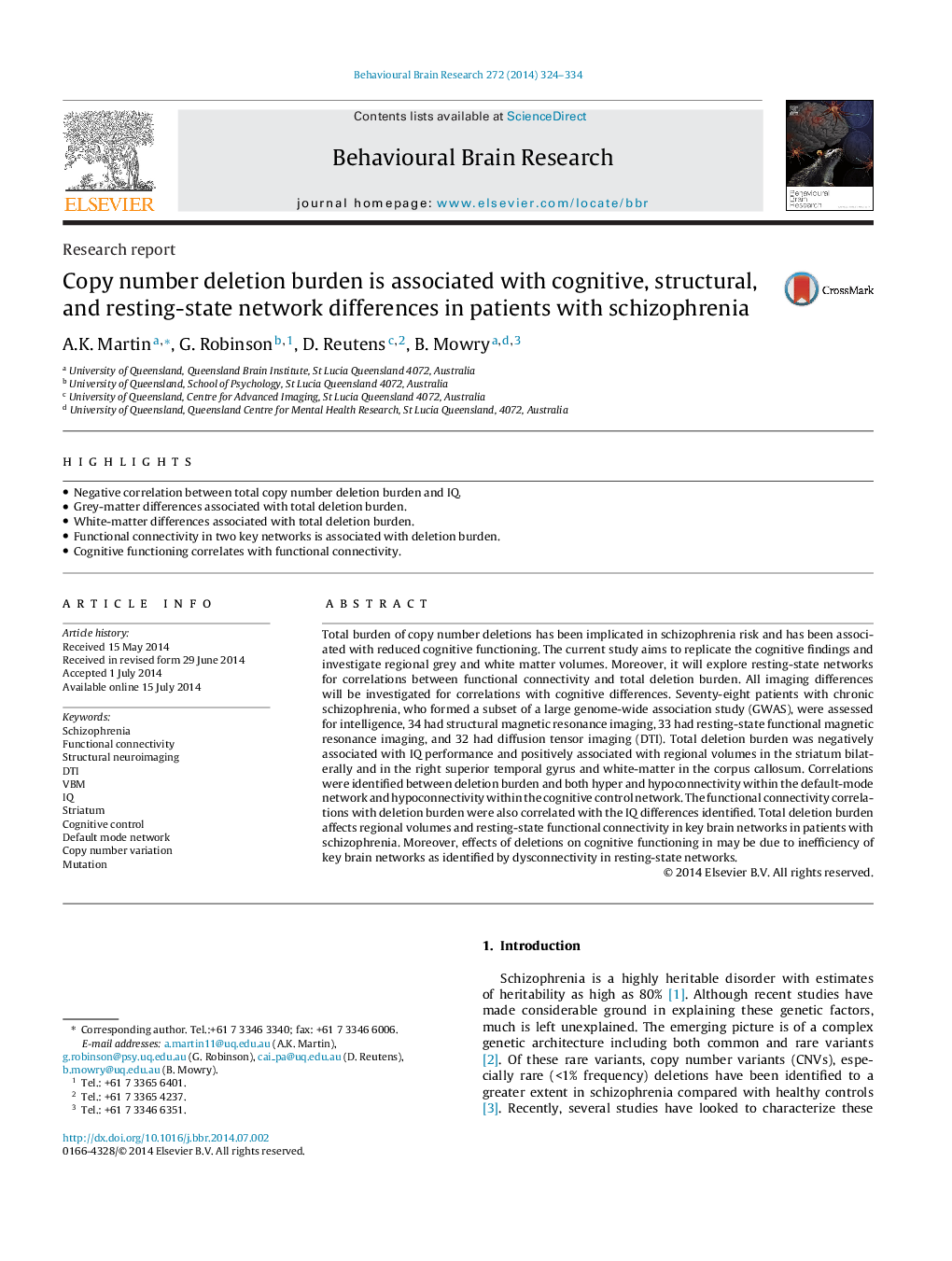| کد مقاله | کد نشریه | سال انتشار | مقاله انگلیسی | نسخه تمام متن |
|---|---|---|---|---|
| 6257535 | 1612960 | 2014 | 11 صفحه PDF | دانلود رایگان |
- Negative correlation between total copy number deletion burden and IQ.
- Grey-matter differences associated with total deletion burden.
- White-matter differences associated with total deletion burden.
- Functional connectivity in two key networks is associated with deletion burden.
- Cognitive functioning correlates with functional connectivity.
Total burden of copy number deletions has been implicated in schizophrenia risk and has been associated with reduced cognitive functioning. The current study aims to replicate the cognitive findings and investigate regional grey and white matter volumes. Moreover, it will explore resting-state networks for correlations between functional connectivity and total deletion burden. All imaging differences will be investigated for correlations with cognitive differences. Seventy-eight patients with chronic schizophrenia, who formed a subset of a large genome-wide association study (GWAS), were assessed for intelligence, 34 had structural magnetic resonance imaging, 33 had resting-state functional magnetic resonance imaging, and 32 had diffusion tensor imaging (DTI). Total deletion burden was negatively associated with IQ performance and positively associated with regional volumes in the striatum bilaterally and in the right superior temporal gyrus and white-matter in the corpus callosum. Correlations were identified between deletion burden and both hyper and hypoconnectivity within the default-mode network and hypoconnectivity within the cognitive control network. The functional connectivity correlations with deletion burden were also correlated with the IQ differences identified. Total deletion burden affects regional volumes and resting-state functional connectivity in key brain networks in patients with schizophrenia. Moreover, effects of deletions on cognitive functioning in may be due to inefficiency of key brain networks as identified by dysconnectivity in resting-state networks.
Journal: Behavioural Brain Research - Volume 272, 1 October 2014, Pages 324-334
